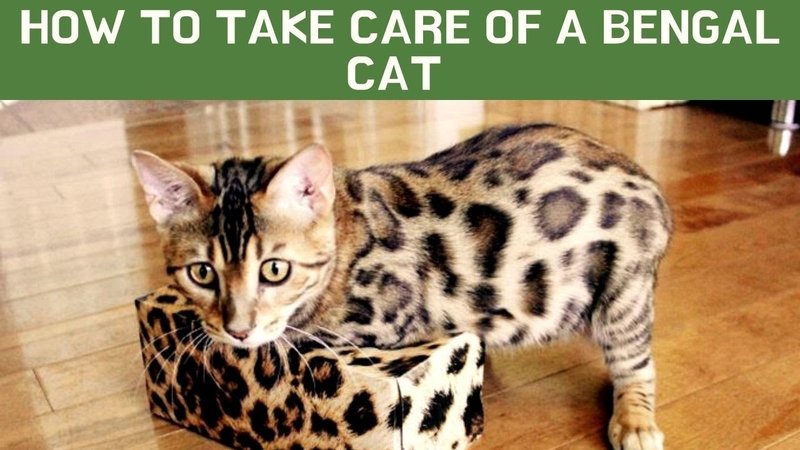
Here’s the thing: Bengals are not your average house cats. Their playful spirit and intelligence can keep you on your toes. Think of them as the athletes of the cat world; they need stimulation, attention, and love to thrive. So, grab a comfy seat, and let’s dive into how to properly care for your Bengal cat.
Understanding the Unique Traits of Bengal Cats
Before we jump into grooming, feeding, and environmental needs, it’s essential to understand what makes Bengal cats special. These felines are known for their incredible energy and playful nature. They can be quite vocal, often making their presence known with a series of cute chirps and meows. You might even feel like you have a little conversation buddy!
Physically, Bengals are striking. Their coat is not only beautiful but also has a unique texture, almost like a soft pelt. This can make grooming a little different compared to other cats. Their wild ancestry gives them some funky habits and a love for climbing, so they will need plenty of vertical space to explore.
In a nutshell, Bengals are adventurous, social, and full of personality. Getting to know these traits will help you tailor your care routine to fit their needs.
Grooming Your Bengal Cat
Grooming your Bengal cat is essential not just for their appearance, but for their overall health. Unlike some breeds, Bengal cats have a short coat that requires less maintenance, but don’t let that fool you. Regular grooming sessions are still important to keep their fur shiny and healthy.
Here’s a simple schedule to follow:
- Brush Weekly: Use a soft-bristle brush or a grooming glove to remove loose hair. This can help minimize shedding and keep their coat sleek.
- Check Ears and Eyes: Look for any signs of dirt or discharge. Wipe gently with a damp cloth if needed.
- Trim Nails Monthly: Keeping their nails short will prevent scratches on you and your furniture. If you’re unsure how to trim, ask your vet for a demonstration.
Honestly, many Bengals enjoy grooming sessions. It’s a great opportunity for bonding, and you might even discover your feline friend’s favorite spots to be petted.
Bathing a Bengal Cat
You might be wondering if you need to bathe your Bengal. The good news is that they don’t require frequent baths. Their fur is designed to repel dirt and odors. However, if they get into something messy or have a health issue, a bath might be necessary. Use a gentle, cat-specific shampoo and ensure the water isn’t too hot or cold. Always rinse thoroughly!
Feeding Your Bengal Cat
Feeding your Bengal cat the right diet is crucial. These cats are known for their high energy levels, which means they require a nutrient-rich diet that supports their playful lifestyle. Here are some tips to consider:
Choose High-Quality Food: Look for protein-rich cat food. The first ingredient should ideally be a named meat source (like chicken or fish). Cats are obligate carnivores, meaning they thrive on animal protein.
Consider Wet and Dry Food: A combination of wet and dry food can be beneficial. Wet food helps with hydration, while dry food can support dental health. You can start with a mix and see what your cat prefers.
Watch the Portions: Bengal cats can be prone to obesity, so pay attention to portion sizes. Follow the feeding guidelines on the food packaging, but adjust as needed based on your cat’s activity level and weight.
You can also talk to your veterinarian for tailored advice on the best diet for your Bengal cat, especially if they have any health concerns.
Creating the Ideal Environment
Designing a welcoming and stimulating environment for your Bengal cat is key to their happiness. Bengals thrive on play and exploration, so think about their space much like a playground. Here are some tips to set up the perfect environment:
Provide Vertical Space: Bengals love to climb! Invest in tall cat trees or shelves that they can explore. This not only satisfies their climbing instinct but also gives them a chance to survey their kingdom from above.
Interactive Toys: Get a variety of toys to keep them engaged. Feather wands, puzzle toys, and even laser pointers can keep your Bengal entertained for hours. Rotate toys regularly to keep things fresh and exciting.
Create Cozy Spots: While Bengals are energetic, they also appreciate cozy hideaways. Consider adding a soft bed or a warm blanket in a quiet corner for your cat to retreat to when it’s time to recharge.
Here’s the thing: a well-thought-out environment can prevent destructive behavior. If your Bengal has plenty to do and explore, they’re less likely to get bored and cause mischief.
Socializing and Interaction
Bengals are social creatures, and they thrive on interaction with their humans. Here’s how to build a strong bond with your feline friend:
Playtime is Essential: Set aside time each day for interactive play. This not only stimulates their minds but also strengthens your bond. Plus, it’s fun!
Train Them: Believe it or not, Bengals can be trained! Use positive reinforcement methods to teach them tricks or simple commands. You might be surprised at their intelligence.
Encourage Socialization: If you have other pets, supervise their interactions initially. Bengals typically get along well with dogs and other cats, but early socialization is key.
Letting your Bengal cat know they are part of the family is vital. They’ll return the love with endless cuddles and playful antics.
Common Health Considerations
While Bengals are generally healthy, like all breeds, they can be prone to certain health issues. Regular vet check-ups are important. Some common concerns include:
Hip Dysplasia: This genetic condition can affect their mobility. Watch for signs of discomfort and consult your vet if you notice any issues.
Heart Disease: Bengals can develop hypertrophic cardiomyopathy, a heart condition. Regular vet visits can help catch this early.
Skin Conditions: Their unique coat can be prone to certain skin issues. Keep an eye out for any abnormalities, like excessive scratching or bald patches.
By staying proactive and informed, you can help keep your Bengal cat healthy and happy. Regular check-ups and a solid understanding of their health needs will go a long way.
Caring for a Bengal cat can be a rewarding experience filled with love, laughter, and plenty of playful antics. With their unique grooming needs, high-energy diets, and the right environment, your Bengal can thrive in your home. Think of it as a partnership—you provide the care, and your Bengal provides the joy.
So grab that brush, fill their bowl with nutritious food, and create an exciting space for them to explore. You’re not just caring for a pet; you’re welcoming a little wild spirit into your life. Enjoy every moment with your beautiful Bengal cat!

